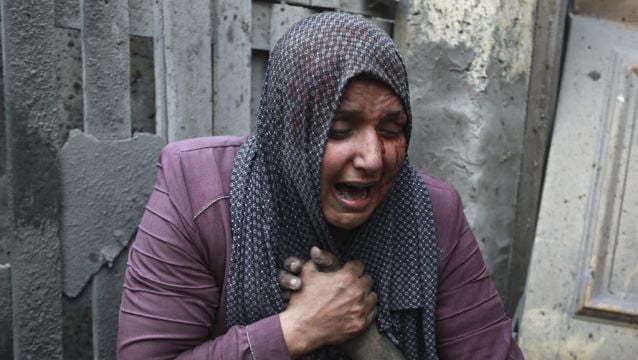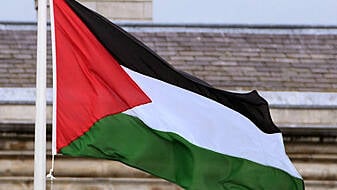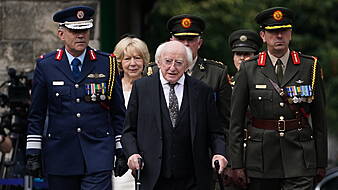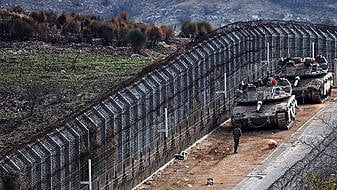Hamas released two elderly Israeli women held hostage in Gaza on Monday, as the United States expressed increasing concern that the escalating Israel-Hamas war will spark a wider conflict in the region, including attacks on American troops.
The death toll in Gaza rose rapidly as Israel ramped up airstrikes, flattening residential buildings in what it says was preparation for an eventual ground assault.
The US advised Israel to delay an expected ground invasion to allow time to negotiate the release of more hostages taken by Hamas during its brutal incursion two weeks ago.
A third small aid convoy from Egypt entered Gaza, where the population of 2.3 million has been running out of food, water and medicine under Israel’s two-week seal.
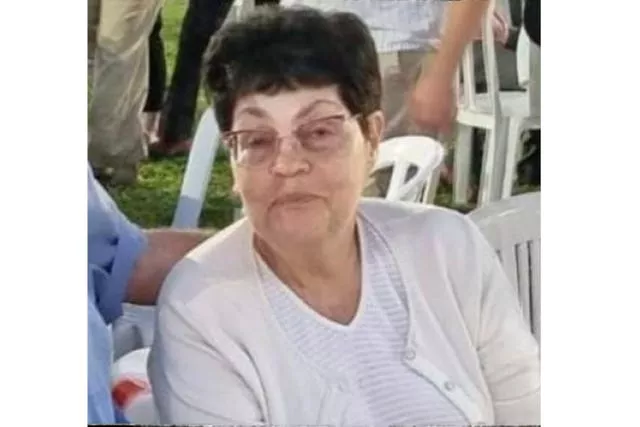
With Israel still barring entry of fuel, the UN said its distribution of aid would grind to a halt within days when it can no longer fuel its lorries.
Gaza hospitals are struggling to keep generators running to power life-saving medical equipment and incubators for premature babies.
The two freed hostages, Yocheved Lifshitz, 85, and Nurit Cooper, 79, were taken out of Gaza at the Rafah crossing into Egypt, where they were put into ambulances, according to footage shown on Egyptian TV.
The two women and their husbands were taken from their homes in the kibbutz of Nir Oz near the Gaza border during Hamas’ October 7 rampage into southern Israeli communities. Their husbands were not released.
Hamas said it had released them for humanitarian reasons, days after freeing an American woman and her teenage daughter.
Hamas and other militants in Gaza are believed to have taken roughly 220 people, including an unconfirmed number of foreigners and dual nationals.
📢 We facilitated the release of 2 more hostages, transporting them out of #Gaza this evening.
Our role as a neutral intermediary makes this work possible & we are ready to facilitate any future release.
We hope that they will soon be back with their loved ones.Advertisement— ICRC (@ICRC) October 23, 2023
Israel is widely expected to launch a ground offensive in Gaza, vowing to destroy Hamas after its brutal October 7th rampage into southern Israeli communities.
That is raising fears of the war spreading beyond Gaza and Israel, as Iranian-backed fighters in the region are warning of possible escalation, including targeting US forces deployed in the Middle East.
The US has told Iranian-backed Hezbollah in Lebanon and other groups not to join the fight.
Israel has frequently traded fire with Hezbollah and Israeli warplanes have hit targets in the occupied West Bank, Syria and Lebanon in recent days.
The US advised Israeli officials that delaying a ground offensive would give Washington more time to work with regional mediators on securing the release of more hostages taken by Hamas during its deadly incursion, according to a US official.
📍#Gaza "The situation is frankly catastrophic"
🆘Tamer details how our medical teams are doing absolutely everything they can to provide care to over 400,000 displaced people in @UNRWA shelters - including providing 3,000 pregnant women with medical support ⚕️#HearTheirVoices pic.twitter.com/wIAmpl0VWA— UNRWA (@UNRWA) October 23, 2023
Israeli defence minister Yoav Gallant told troops near Gaza to keep preparing for an offensive “because it will come”.
He said it will be a combined offensive from air, land and sea but did not give a timeframe.
Tanks and troops have been massed at the Gaza border, and Israel says it has stepped up airstrikes to reduce the risk to troops in the next stages.
A ground excursion is likely to dramatically increase casualties in what is already the deadliest by far of five wars fought between Israel and Hamas since the militants seized power in Gaza in 2007.
More than 1,400 people in Israel have been killed, mostly civilians during the initial Hamas attack.
At least 222 people were captured and taken back to Gaza, including foreigners, the military said on Monday, updating a previous figure.

More than 5,000 Palestinians, including some 2,000 minors and about 1,100 women, have been killed, the Hamas-run health ministry said on Monday.
That includes the disputed toll from an explosion at a hospital last week. The toll has climbed rapidly in recent days, with the ministry reporting 436 additional deaths in just the last 24 hours.
Israel said it had hit 320 militant targets throughout Gaza over the last 24 hours. The military says it does not target civilians, and that Palestinian militants have fired more than 7,000 rockets at Israel since the start of the war.
The Israeli military released footage showing what it said were attacks on Hamas infrastructure, with explosions as multi-storey buildings collapsed or toppled over.
Israel carried out limited ground forays into Gaza. On Sunday, Hamas said it destroyed an Israeli tank and two armoured bulldozers inside Gaza.
The Israeli military said a soldier was killed and three others were wounded by an anti-tank missile during a raid inside Gaza.
The military said the raid was part of efforts to rescue hostages. Hamas hopes to trade the captives for Palestinian prisoners held by Israel.

On Monday the Palestinian Red Crescent said 20 lorries entered Gaza carrying food, water, medicine and medical supplies, through the Rafah crossing with Egypt, the only way into Gaza not controlled by Israel.
It was the third delivery in as many days, each around the same size.
The aid coming in so far is “a drop in the ocean” compared with the needs of the population, said Thomas White, the Gaza director of the UN agency for Palestinian refugees, UNRWA.
The UN has said 20 lorries amounts to 4 per cent of an average day’s imports before the war and that hundreds of lorries a day are needed.
Mr White said the agency had only three days of fuel left for its lorries.
The supplies coming through Rafah are reloaded on to UNRWA and the Red Crescent lorries to take to hospitals and UN schools in the south of Gaza, where hundreds of thousands of people are taking shelter, running low on food and largely drinking contaminated water.
An airstrike hit a residential building some 200 metres from the UN headquarters in Rafah on Monday, killing and wounding several people, according to an Associated Press reporter at the scene, underscoring the perils of humanitarian operations.
In #Gaza the damage to essential infrastructure is devastating.
💧People desperately need drinking water.
❌Water can't be pumped or desalinated. Wastewater systems are likely to flood.
❌Water treatment plants can’t run without fuel.
❌Hospitals can’t run without fuel.— ICRC (@ICRC) October 23, 2023
After a day of intense strikes, Rafah’s Abou Youssef Al-Najjar Hospital registered 61 deaths since Monday morning, its spokesman said. With no room in the morgue, more half the bodies were lying in the hospital grounds, spokesman Talaat Barghout said.
At least 1.4 million Palestinians in Gaza have fled their homes, and nearly 580,000 of them are sheltering in UN-run schools and shelters, the UN said on Monday.
No aid will be distributed in Gaza City and other parts of the north, where hundreds of thousands of people remain.
Gaza City’s main al-Shifa Hospital, with a normal capacity of 700 patients, is currently overwhelmed with 5,000 patients, and about 45,000 displaced people are gathered in and around its grounds for shelter, the UN said.
“The north didn’t receive anything” from incoming aid, said Mahmoud Shalabi, an aid worker with Medical Aid for Palestinians aid group based in the northern town of Beit Lahia.
“It’s like a death sentence for the people in the north of Gaza.”
